Performance Assessment of a Solar Dryer System Using Small Parabolic Dish and Alumina/Oil Nanofluid: Simulation and Experimental Study
Abstract
:1. Introduction
2. Materials and Method
2.1. Solar Collector and Dryer
2.2. Nanofluid Preparation
2.3. Solar Collector Performance Evaluation
2.4. Dryer Performance Evaluation
2.5. Color Variation of Mint Leaves
3. Result and Discussion
3.1. Solar Dish Performance
3.1.1. Pure Thermal Oil
3.1.2. Al2O3/Thermal Oil Nanofluid
3.1.3. Comparison of Performance
3.2. Solar Dryer Performance
4. Conclusions
- The difference in temperature of the solar working fluids at the inlet and outlet of the cavity receiver showed similar trend data compared to the variation of the solar radiation during the experimental test.
- The cavity top wall resulted in a higher surface temperature compared to the cavity sidewall. Also, the cavity surface temperatures resulted in comparable trend data compared to the variation of the wind speed during the experimental tests. The higher temperature of the top wall is justified by the high number of solar rays that reach this region.
- The maximum thermal efficiency of the solar system using the pure oil and the Al2O3/oil nanofluid was measured equal to 85% and 96%, respectively. Generally, the cavity heat gain and thermal efficiency of the solar system improved by using the application of the nanofluid as the solar working fluid. Practically, the use of nanofluids leads to higher heat-transfer rates, which aid the working fluid to gain more useful heat, and so the thermal losses are reduced due to the lower wall-temperature levels.
- The required time for mint drying decreased by increasing drying temperature and increasing air speed. This is a reasonable result because, in these operating conditions, there are higher heat-transfer rates. The highest drying time was measured equal to 320 min for the condition of the air speed equal to 0.5 m/s, and the drying temperature of 30 °C, whereas the lowest drying time was measured for the condition of the air speed equal to 1.5 m/s, and the drying temperature of 50 °C. The drying time had increased with spending the time of the experimental test.
- It was concluded that air outlet speed increased with increasing air inlet speed. Also, variation of air speed had resulted in more uniform distribution at the outlet of the dryer, with increasing air inlet speed. Based on a comparison between numerical and experimental results of the current research, good agreement was observed between the calculated numerical results and measured experimental data.
- Finally, based on the color histogram of the wet and dried mint samples, it was concluded that the intensity amount of the red color of the mint increased with the drying process compared to the intensity amount of the red color of the wet mint sample. Also, the red color intensity amount of dried mint samples increased with increasing inlet air temperature.
Author Contributions
Funding
Acknowledgments
Conflicts of Interest
References
- Ghobadian, B.; Najafi, G.; Rahimi, H.; Yusaf, T. Future of renewable energies in Iran. Renew. Sustain. Energy Rev. 2009, 13, 689–695. [Google Scholar] [CrossRef]
- Khoobbakht, G.; Najafi, G.; Karimi, M.; Akram, A. Optimization of operating factors and blended levels of diesel, biodiesel and ethanol fuels to minimize exhaust emissions of diesel engine using response surface methodology. Appl. Therm. Eng. 2016, 99, 1006–1017. [Google Scholar] [CrossRef]
- Najafi, G.; Ghobadian, B.; Yusaf, T.; Ardebili, S.M.; Mamat, R. Optimization of performance and exhaust emission parameters of a SI (spark ignition) engine with gasoline–ethanol blended fuels using response surface methodology. Energy 2015, 90, 1815–1829. [Google Scholar] [CrossRef]
- Yusaf, T.; Hamawand, I.; Baker, P.; Najafi, G. The effect of methanol-diesel blended ratio on CI engine performance. Int. J. Automot. Mech. Eng. 2013, 8, 1385–1395. [Google Scholar] [CrossRef]
- Kartite, J.; Cherkaoui, M. Study of the different structures of hybrid systems in renewable energies: A review. Energy Procedia 2019, 157, 323–330. [Google Scholar] [CrossRef]
- Phillips, L. Solar Energy, in Managing Global Warming: An Interface of Technology and Human Issues; Letcher, T.M., Ed.; Elsevier: Amsterdam, The Netherlands, 2018; pp. 317–332. [Google Scholar]
- Kalogirou, S.A. Solar thermal collectors and applications. Prog. Energy Combust. Sci. 2004, 30, 231–295. [Google Scholar] [CrossRef]
- Eltawil, M.A.; Azam, M.M.; Alghannam, A.O. Energy analysis of hybrid solar tunnel dryer with PV system and solar collector for drying mint (MenthaViridis). J. Clean. Prod. 2018, 181, 352–364. [Google Scholar] [CrossRef]
- Qin, J.; Hu, E.; Nathan, G.J.; Chen, L. Concentrating or non-concentrating solar collectors for solar Aided Power Generation? Energy Convers. Manag. 2017, 152, 281–290. [Google Scholar] [CrossRef]
- Bellos, E.; Tzivanidis, C. Alternative designs of parabolic trough solar collectors. Prog. Energy Combust. Sci. 2019, 71, 81–117. [Google Scholar] [CrossRef]
- Le Roux, W.G.; Bello-Ochende, T.; Meyer, J.P. The efficiency of an open-cavity tubular solar receiver for a small-scale solar thermal Brayton cycle. Energy Convers. Manag. 2014, 84, 457–470. [Google Scholar] [CrossRef] [Green Version]
- Loni, R.; Kasaeian, A.; Asli-Ardeh, E.A.; Ghobadian, B. Optimizing the efficiency of a solar receiver with tubular cylindrical cavity for a solar-powered organic Rankine cycle. Energy 2016, 112, 1259–1272. [Google Scholar] [CrossRef]
- Loni, R.; Kasaeian, A.; Shahverdi, K.; Asli-Ardeh, E.A.; Ghobadian, B.; Ahmadi, M.H. ANN model to predict the performance of parabolic dish collector with tubular cavity receiver. Mech. Ind. 2017, 18, 408. [Google Scholar] [CrossRef]
- Loni, R.; Kasaeian, A.; Mahian, O.; Sahin, A. Thermodynamic analysis of an organic rankine cycle using a tubular solar cavity receiver. Energy Convers. Manag. 2016, 127, 494–503. [Google Scholar] [CrossRef]
- Pavlovic, S.; Loni, R.; Bellos, E.; Vasiljević, D.; Najafi, G.; Kasaeian, A. Comparative study of spiral and conical cavity receivers for a solar dish collector. Energy Convers. Manag. 2018, 178, 111–122. [Google Scholar] [CrossRef]
- Loni, R.; Asli-Ardeh, E.A.; Ghobadian, B.; Bellos, E.; Le Roux, W.G. Numerical comparison of a solar dish concentrator with different cavity receivers and working fluids. J. Clean. Prod. 2018, 198, 1013–1030. [Google Scholar] [CrossRef]
- Venkatachalam, T.; Cheralathan, M. Effect of aspect ratio on thermal performance of cavity receiver for solar parabolic dish concentrator: An experimental study. Renew. Energy 2019, 139, 573–581. [Google Scholar] [CrossRef]
- Yan, J.; Peng, Y.-D.; Cheng, Z.-R. Optimization of a discrete dish concentrator for uniform flux distribution on the cavity receiver of solar concentrator system. Renew. Energy 2018, 129, 431–445. [Google Scholar] [CrossRef]
- Yang, S.; Wang, J.; Lund, P.D.; Jiang, C.; Huang, B. Design and performance evaluation of a high-temperature cavity receiver for a 2-stage dish concentrator. Sol. Energy 2018, 174, 1126–1132. [Google Scholar] [CrossRef]
- Loni, R.; Kasaeian, A.; Asli-Ardeh, E.A.; Ghobadian, B.; Le Roux, W. Performance study of a solar-assisted organic Rankine cycle using a dish-mounted rectangular-cavity tubular solar receiver. Appl. Therm. Eng. 2016, 108, 1298–1309. [Google Scholar] [CrossRef]
- Karimi, R.; Gheinani, T.T.; Avargani, V.M. A detailed mathematical model for thermal performance analysis of a cylindrical cavity receiver in a solar parabolic dish collector system. Renew. Energy 2018, 125, 768–782. [Google Scholar] [CrossRef]
- Pavlovic, S.; Bellos, E.; Loni, R. Exergetic investigation of a solar dish collector with smooth and corrugated spiral absorber operating with various nanofluids. J. Clean. Prod. 2018, 174, 1147–1160. [Google Scholar] [CrossRef]
- Hamzah, M.H.; Sidik, N.A.; Ken, T.L.; Mamat, R.; Najafi, G. Factors affecting the performance of hybrid nanofluids: A comprehensive review. Int. J. Heat Mass Transf. 2017, 115, 630–646. [Google Scholar] [CrossRef]
- Abdolbaqi, M.K.; Sidik, N.A.; Aziz, A.; Mamat, R.; Azmi, W.H.; Yazid, M.N.; Najafi, G. An experimental determination of thermal conductivity and viscosity of BioGlycol/water based TiO2 nanofluids. Int. Commun. Heat Mass Transf. 2016, 77, 22–32. [Google Scholar] [CrossRef] [Green Version]
- Najafi, G. Diesel engine combustion characteristics using nano-particles in biodiesel-diesel blends. Fuel 2018, 212, 668–678. [Google Scholar] [CrossRef]
- Xuan, Y.; Li, Q. Heat transfer enhancement of nanofluids. Int. J. Heat Fluid Flow 2000, 21, 58–64. [Google Scholar] [CrossRef]
- Hamid, K.A.; Azmi, W.H.; Mamat, R.; Usri, N.A.; Najafi, G. Effect of temperature on heat transfer coefficient of titanium dioxide in ethylene glycol-based nanofluid. J. Mech. Eng. Sci. (JMES) 2015, 8, 1367–1375. [Google Scholar] [CrossRef]
- Verma, S.K.; Tiwari, A.K. Progress of nanofluid application in solar collectors: A review. Energy Convers. Manag. 2015, 100, 324–346. [Google Scholar] [CrossRef]
- Mahbubul, I.; Khan, M.M.A.; Ibrahim, N.I.; Ali, H.M.; Al-Sulaiman, F.A.; Saidur, R. Carbon nanotube nanofluid in enhancing the efficiency of evacuated tube solar collector. Renew. Energy 2018, 121, 36–44. [Google Scholar] [CrossRef]
- Loni, R.; Asli-Ardeh, E.A.; Ghobadian, B.; Najafi, G.; Bellos, E. Effects of size and volume fraction of alumina nanoparticles on the performance of a solar organic Rankine cycle. Energy Convers. Manag. 2019, 182, 398–411. [Google Scholar] [CrossRef]
- Loni, R.; Asli-Ardeh, E.A.; Ghobadian, B.; Kasaeian, A.; Bellos, E. Thermal performance comparison between Al2O3/oil and SiO2/oil nanofluids in cylindrical cavity receiver based on experimental Study. Renew. Energy 2018, 129, 652–665. [Google Scholar] [CrossRef]
- Loni, R.; Asli-Ardeh, E.A.; Ghobadian, B.; Kasaeian, A.; Bellos, E. Energy and exergy investigation of alumina/oil and silica/oil nanofluids in hemispherical cavity receiver: Experimental Study. Energy 2018, 164, 275–287. [Google Scholar] [CrossRef]
- Hajar, E.; Rachid, T.; Najib, B.M. Conception of a Solar Air Collector for an Indirect Solar Dryer. Pear Drying Test. Energy Procedia 2017, 141, 29–33. [Google Scholar]
- Kalogirou, S. The potential of solar industrial process heat applications. Appl. Energy 2003, 76, 337–361. [Google Scholar] [CrossRef]
- Fadhel, A.; Charfi, K.; Balghouthi, M.; Kooli, S. Experimental investigation of the solar drying of Tunisian phosphate under different conditions. Renew. Energy 2018, 116, 762–774. [Google Scholar] [CrossRef]
- Tegenaw, P.D.; Gebrehiwot, M.G.; Vanierschot, M. On the comparison between computational fluid dynamics (CFD) and lumped capacitance modeling for the simulation of transient heat transfer in solar dryers. Sol. Energy 2019, 184, 417–425. [Google Scholar] [CrossRef]
- Vásquez, J.; Reyes, A.; Pailahueque, N. Modeling, simulation and experimental validation of a solar dryer for agro-products with thermal energy storage system. Renew. Energy 2019, 139, 1375–1390. [Google Scholar] [CrossRef]
- Fudholi, A.; Sopian, K. A review of solar air flat plate collector for drying application. Renew. Sustain. Energy Rev. 2019, 102, 333–345. [Google Scholar] [CrossRef]
- Abhay, L.; Chandramohan, V.; Raju, V. Numerical analysis on solar air collector provided with artificial square shaped roughness for indirect type solar dryer. J. Clean. Prod. 2018, 190, 353–367. [Google Scholar] [CrossRef]
- Fterich, M.; Chouikhi, H.; Bentaher, H.; Maalej, A. Experimental parametric study of a mixed-mode forced convection solar dryer equipped with a PV/T air collector. Sol. Energy 2018, 171, 751–760. [Google Scholar] [CrossRef]
- Baghernejad, A.; Yaghoubi, M. Thermoeconomic methodology for analysis and optimization of a hybrid solar thermal power plant. Int. J. Green Energy 2013, 10, 588–609. [Google Scholar] [CrossRef]
- Ilyas, S.U.; Pendyala, R.; Narahari, M.; Susin, L. Stability, rheology and thermal analysis of functionalized alumina-thermal oil-based nanofluids for advanced cooling systems. Energy Convers. Manag. 2017, 142, 215–229. [Google Scholar] [CrossRef]
- Cengel, Y.A.; Ghajar, A.J.; Kanoglu, M. Heat and Mass Transfer: Fundamentals & Applications; McGraw-Hill: New York, NY, USA, 2011; Volume 4. [Google Scholar]
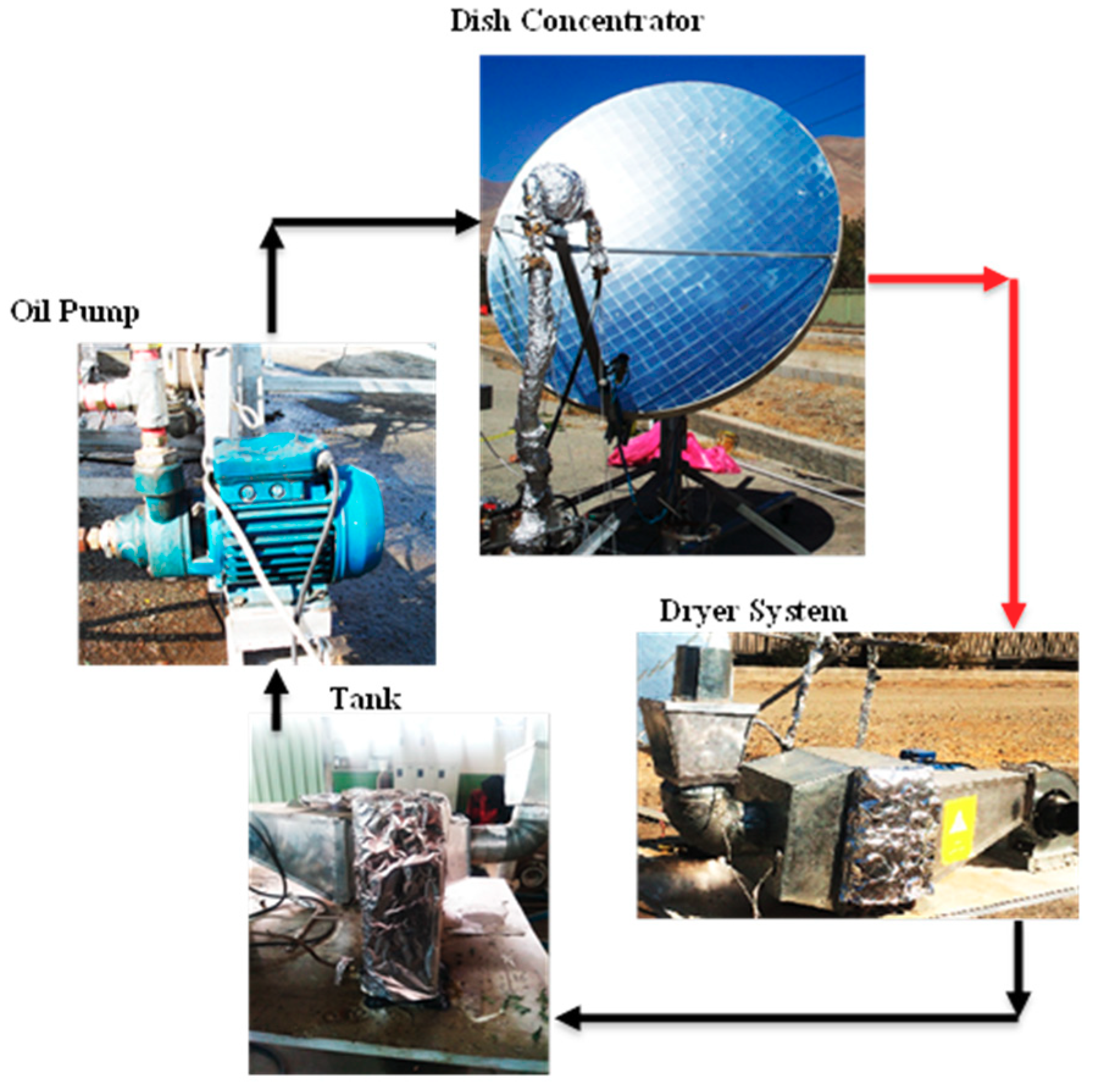

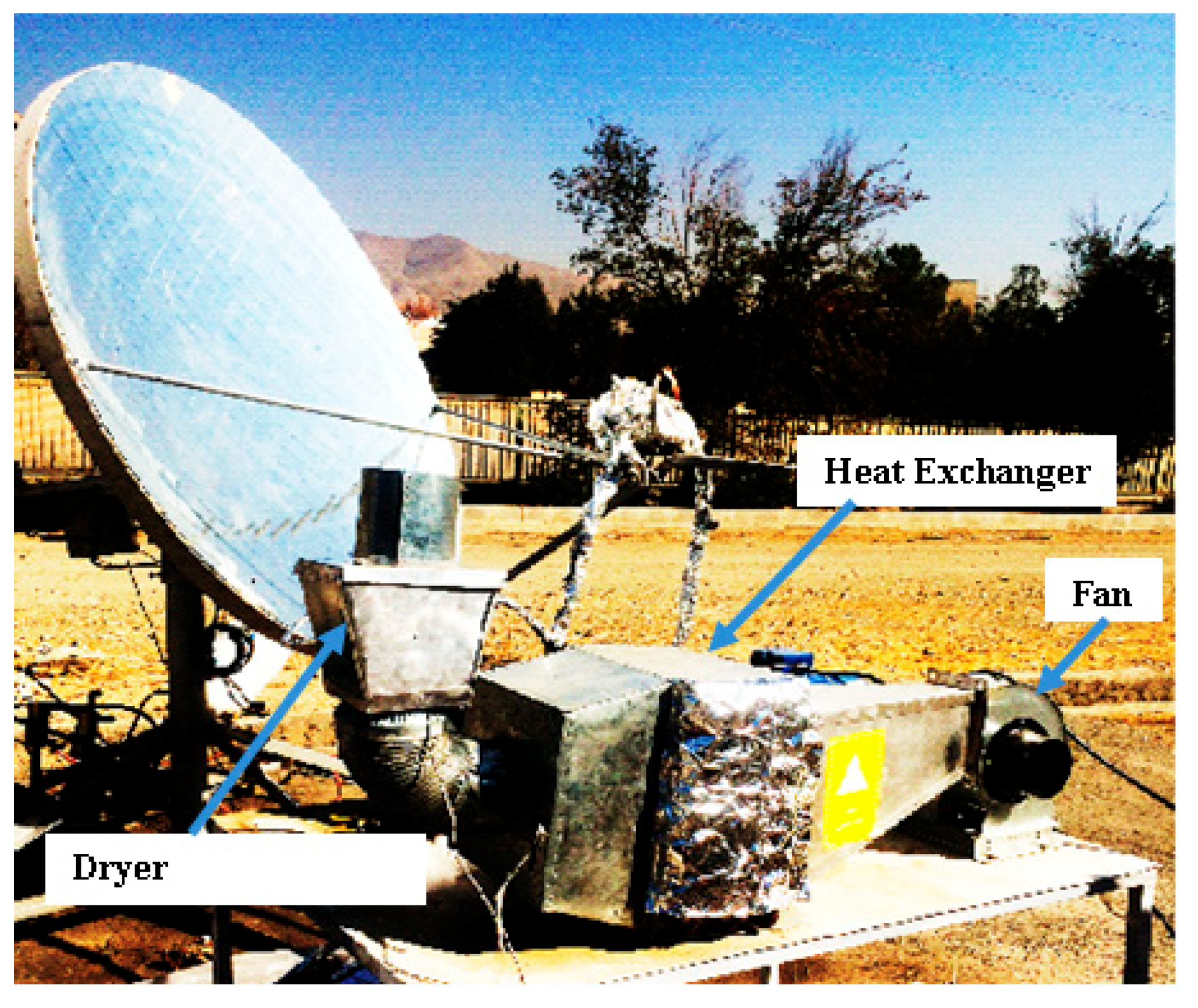

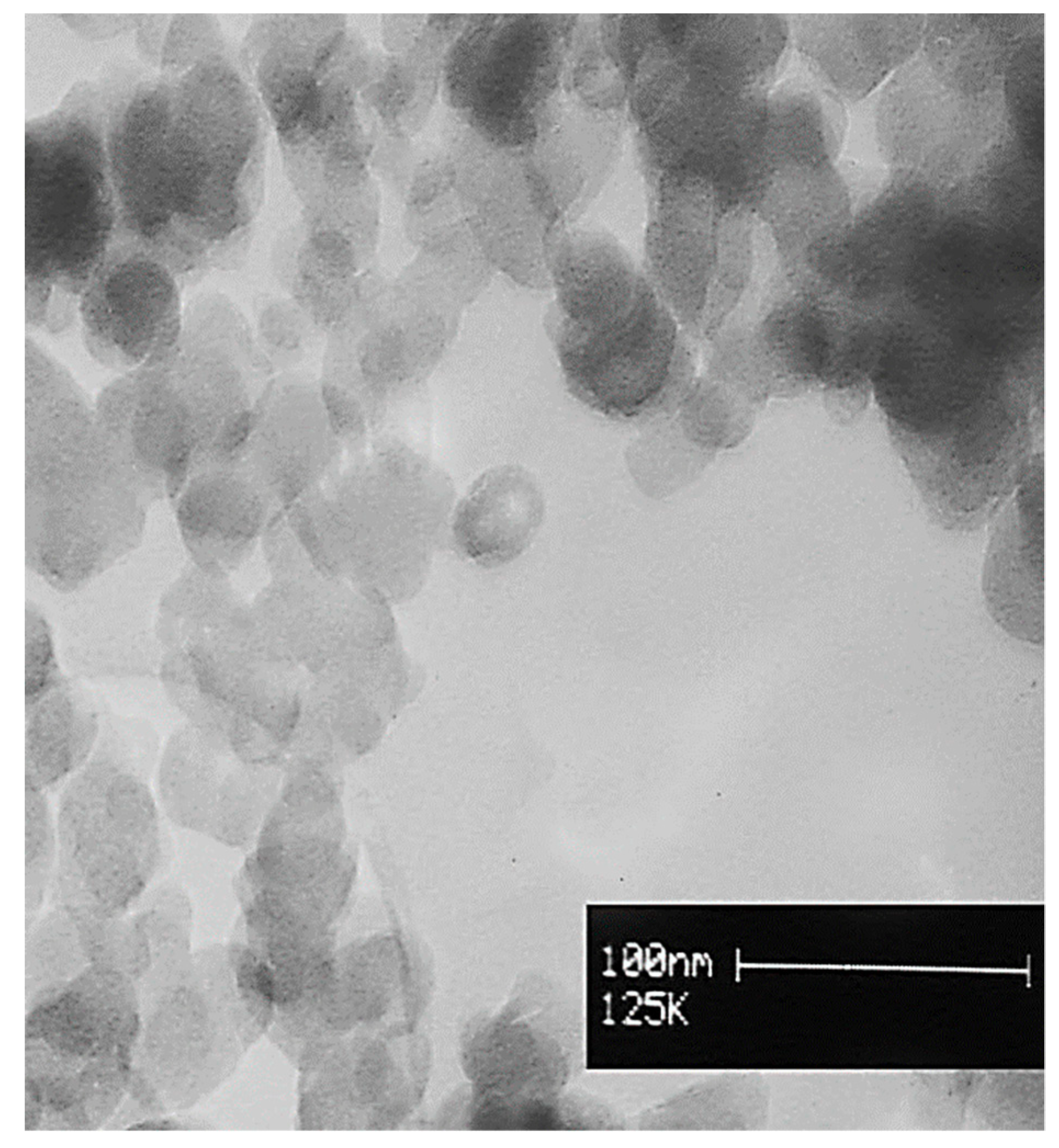
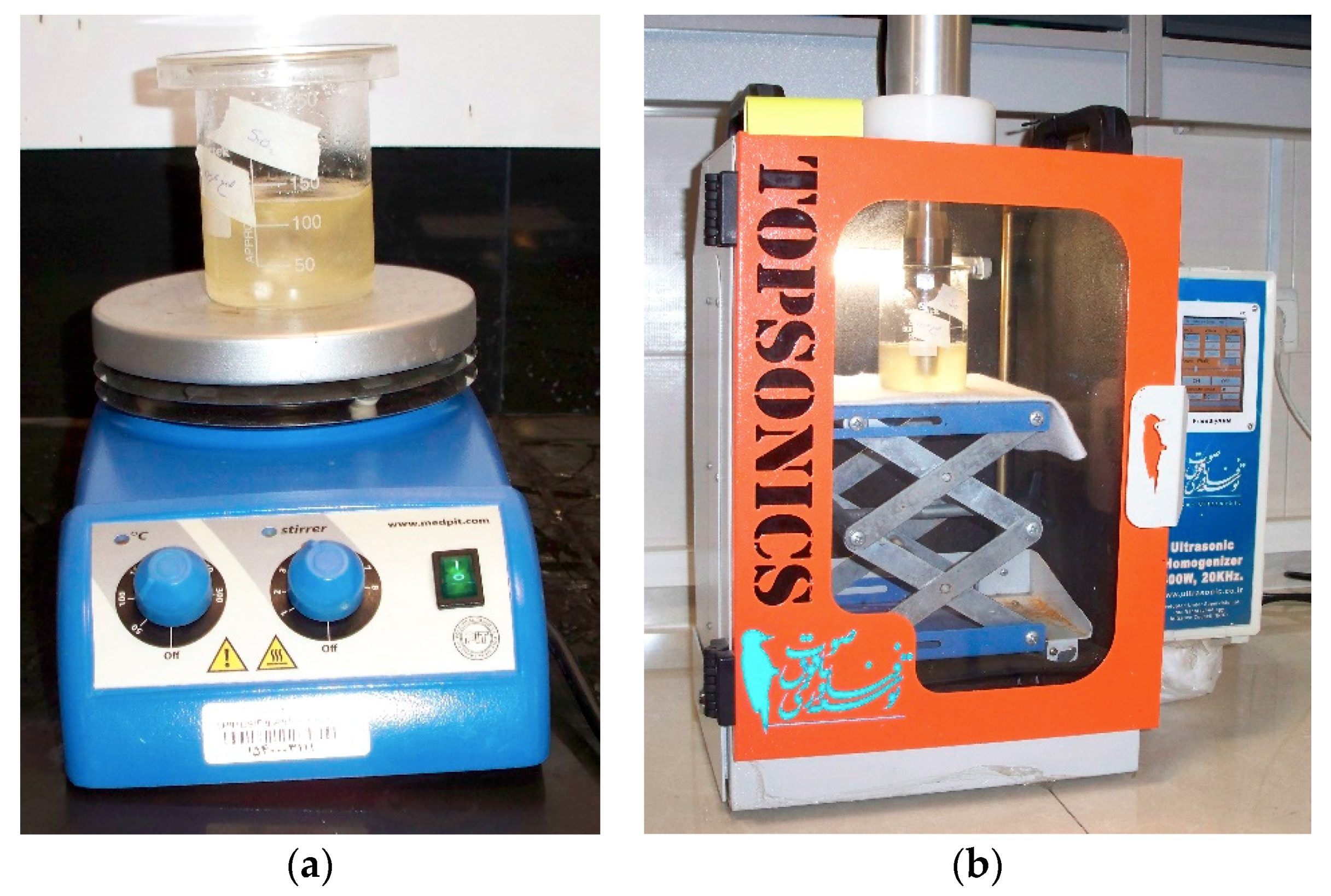



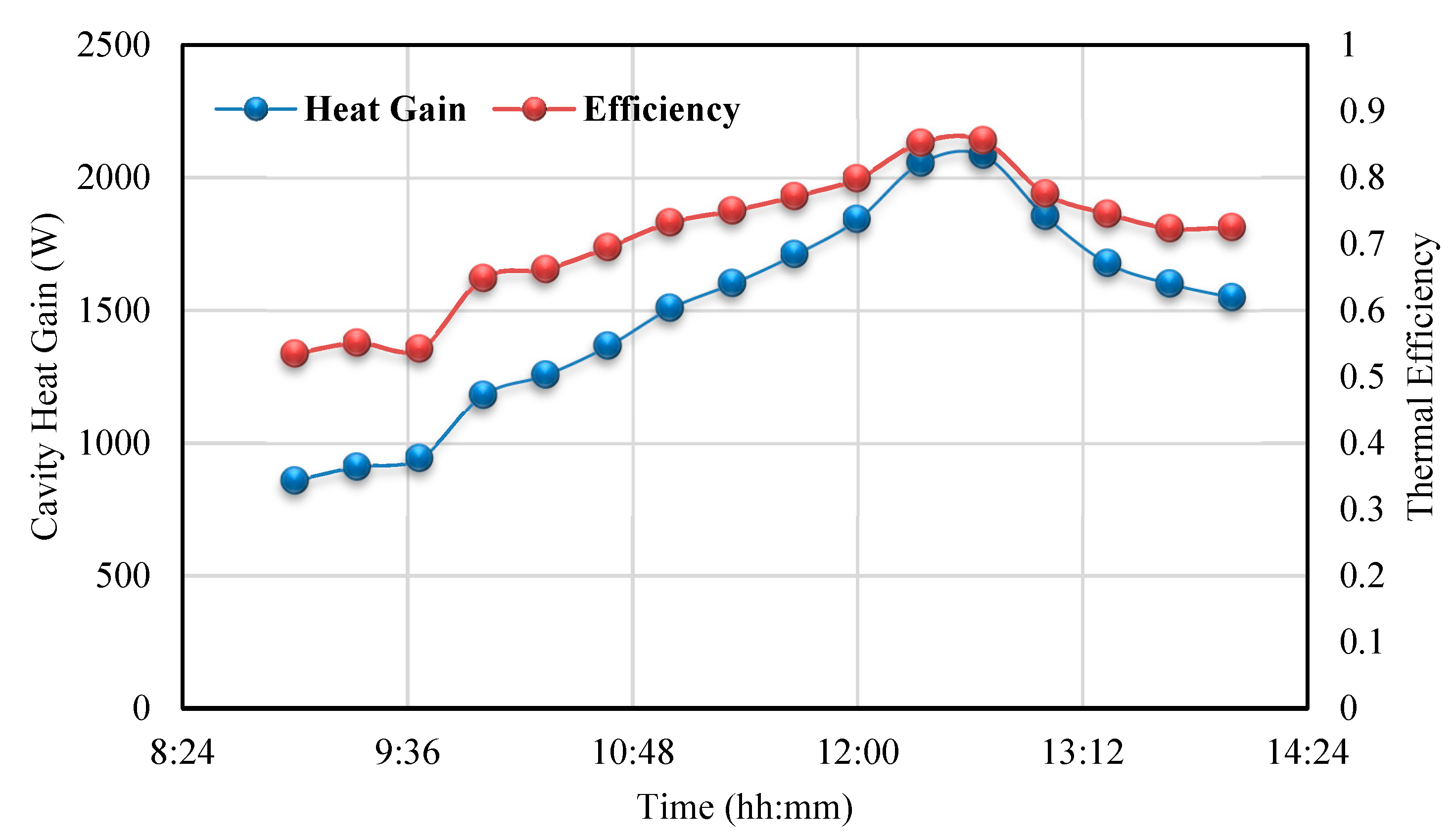

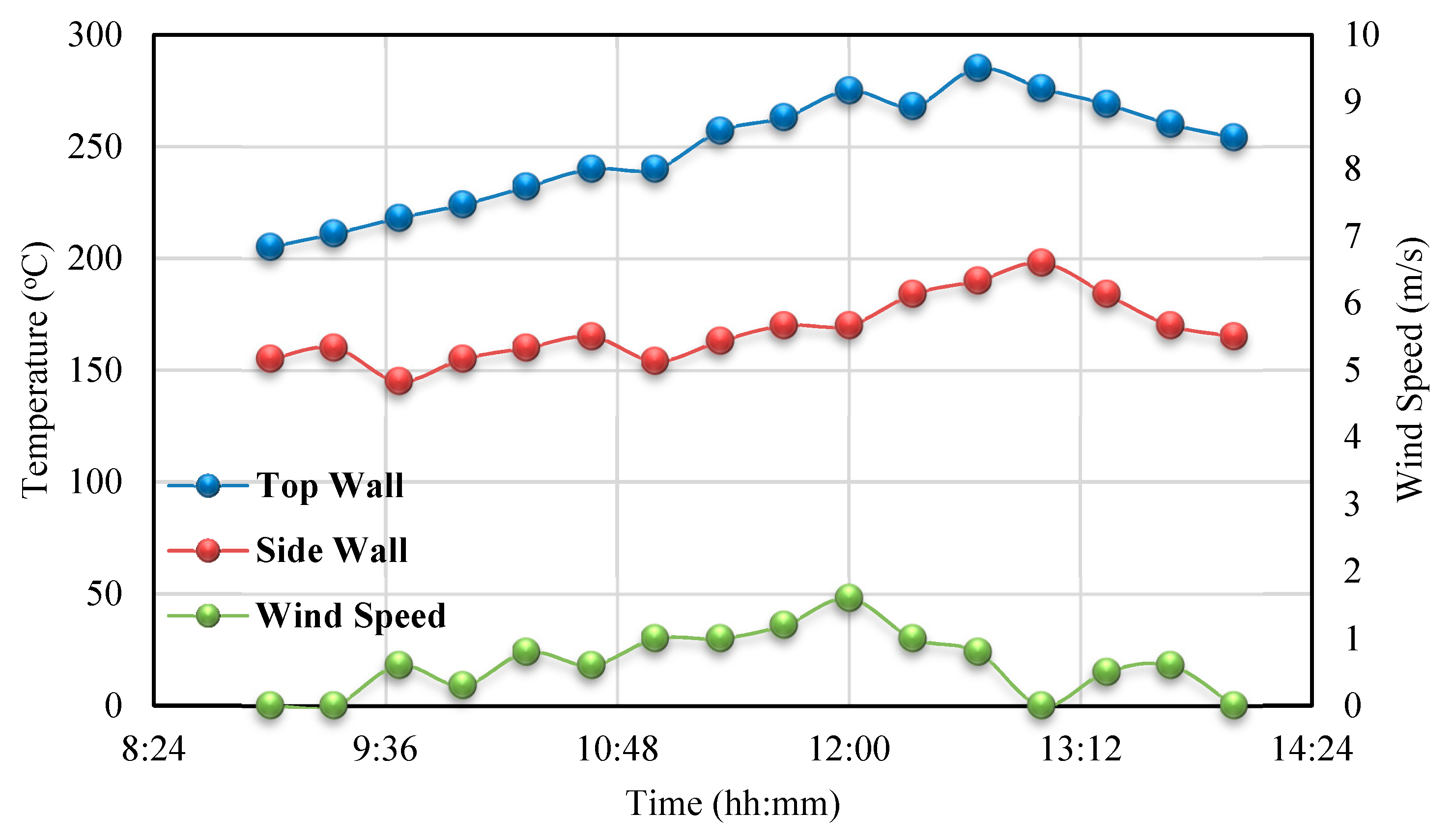

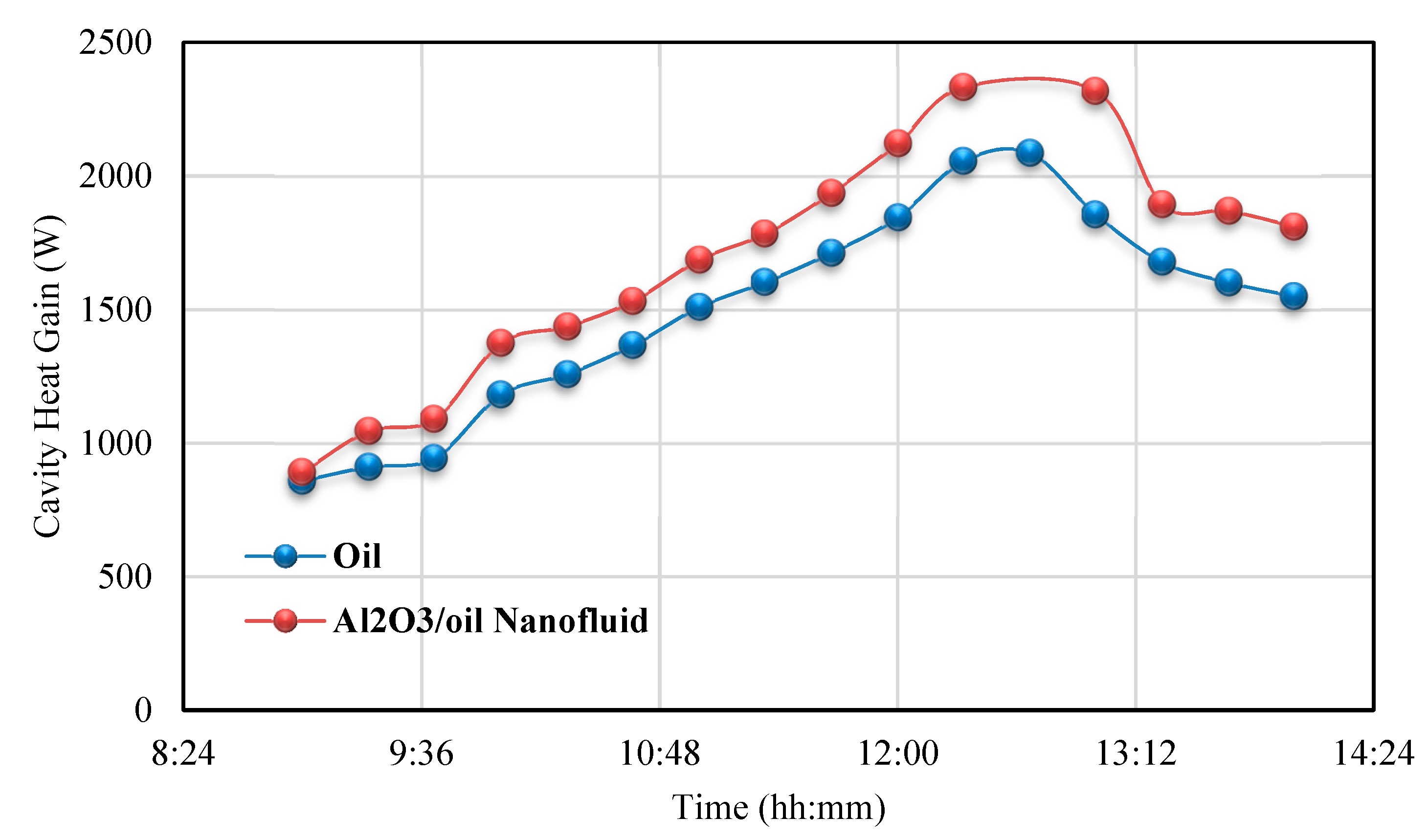
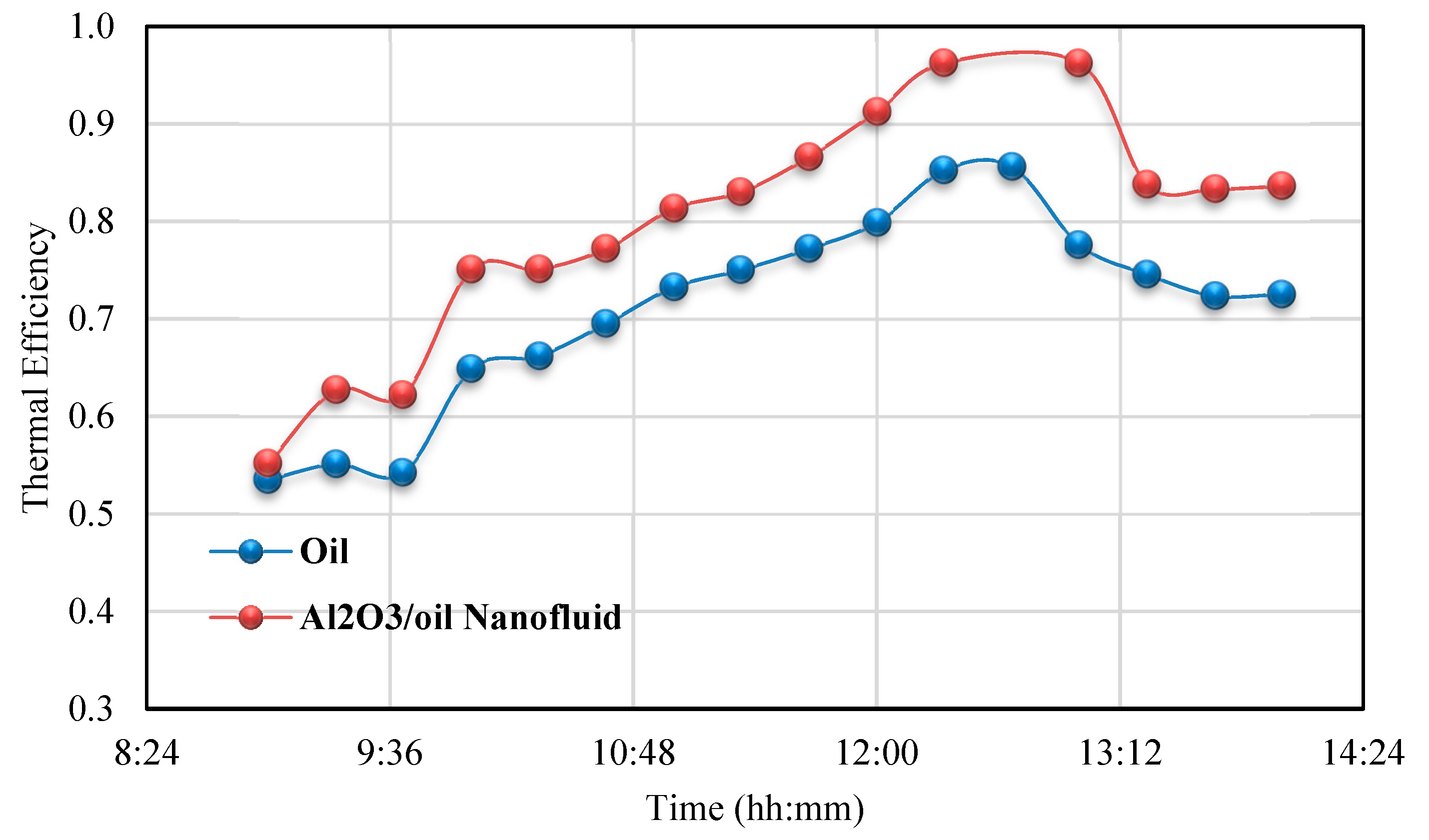

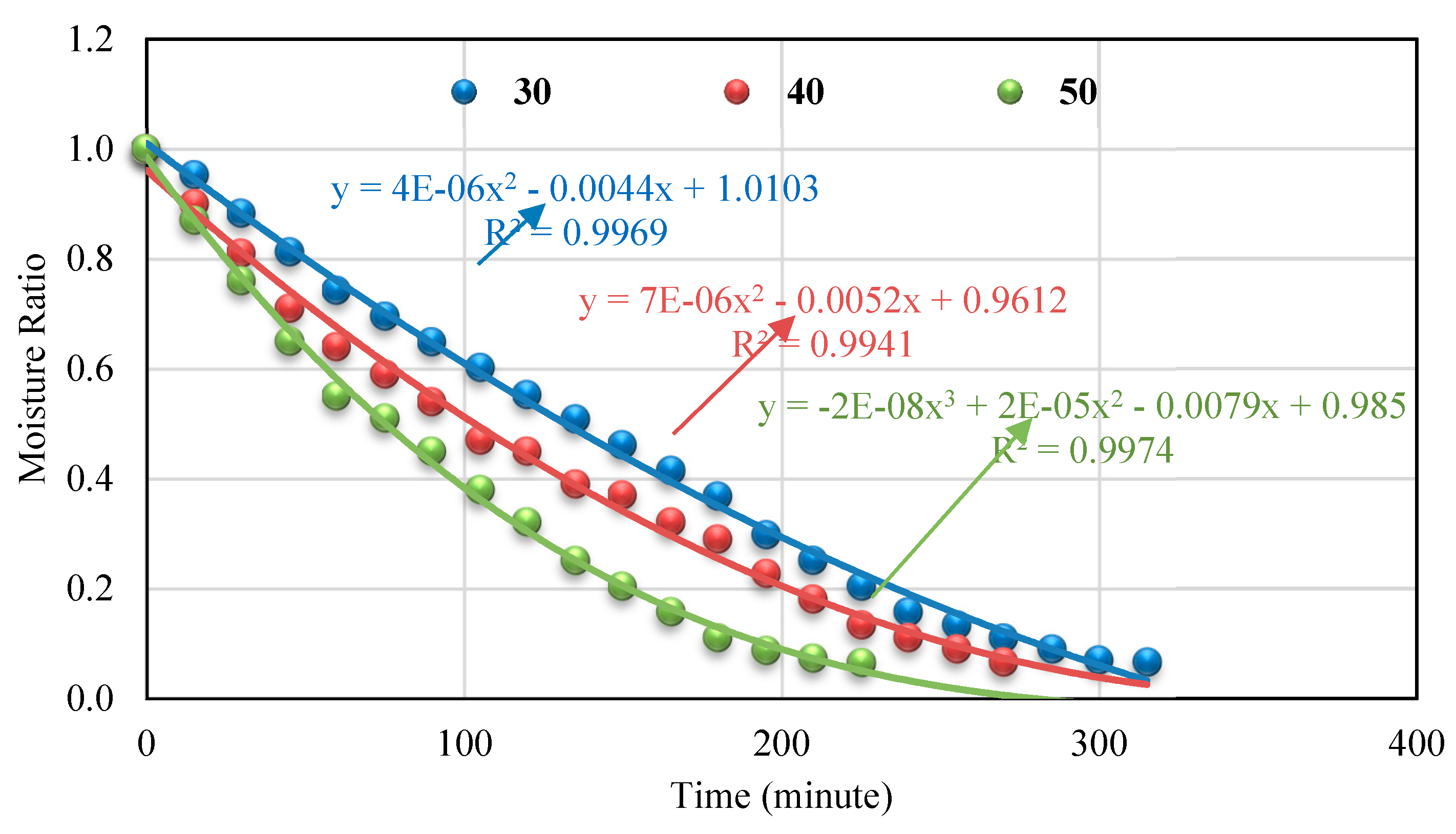

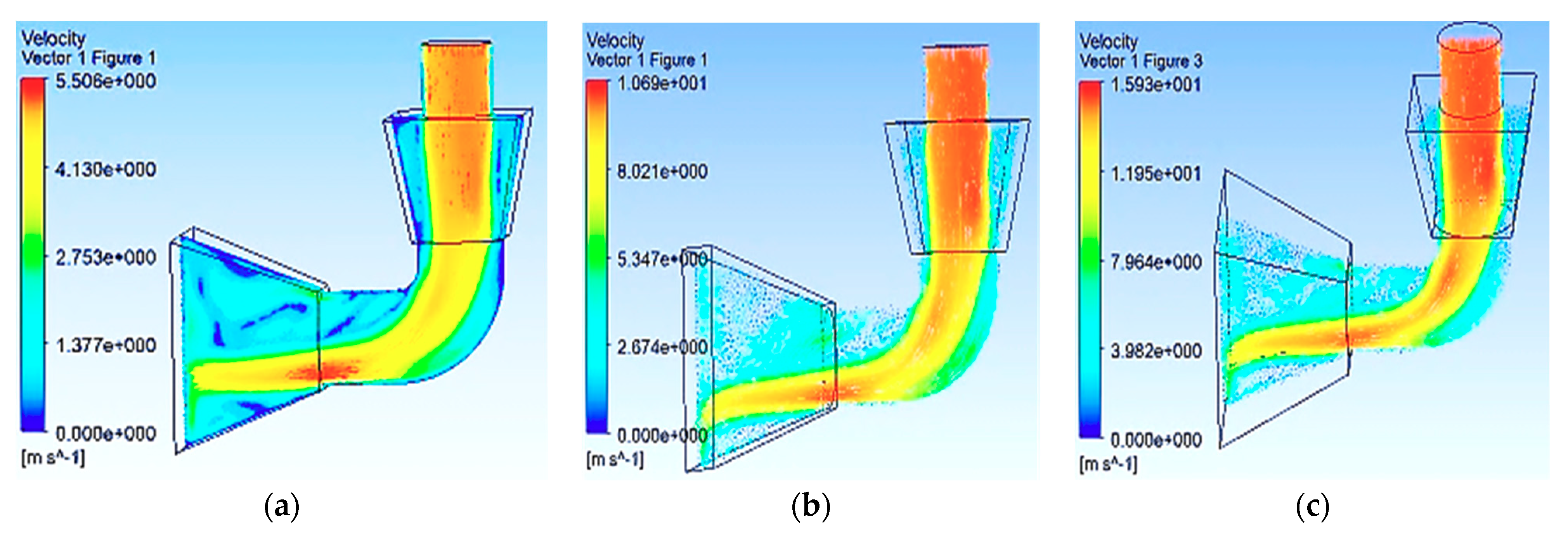





| Structural Dimensions | Values |
|---|---|
| Dish Concentrator | |
| Aperture diameter | 2 m |
| Focal length | 0.693 m |
| Tracking error | 1° |
| Rim angle | 45° |
| Concentration ratio | 165 |
| Focal length | 0.693 m |
| Cylindrical Cavity Receiver | |
| Outer diameter | 16 cm |
| Inner diameter | 14 cm |
| Height | 14 cm |
| Number of tube turns at the cavity height | 14 |
| Inner tube diameter | 10 mm |
| Sl. No. | Instrument | Accuracy | Range | % Error |
|---|---|---|---|---|
| 1 | PT-100 sensor | ±1.35 °C | −200 to 400 °C | 0.25 |
| 2 | Solar power meter | ±0.1 W/m2 | 0 to 2000 W/m2 | 0.25 |
| 3 | Anemometer | ±0.2 m/s | 0.9 to 35.0 m/s | 10 |
| Air Speed (m/s) | Drying Temperature (ºC) | Predicted Experimental Relationship | R2 |
|---|---|---|---|
| 0.5 | 30 | y = 5 × 10−6∙x2 − 0.0047x + 1.0162 | 0.9951 |
| 0.5 | 40 | y = 5 × 10−4x4 − 4 × 10−7x3 + 9 × 10−5x2 − 0.0119x + 1.0085 | 0.9989 |
| 0.5 | 50 | y = −5 × 10−7x3 + 5 × 10−5x2 − 0.0104x + 0.9692 | 0.9943 |
| 1.0 | 30 | y = 4 × 10−6x2 − 0.0044x + 1.0103 | 0.9969 |
| 1.0 | 40 | y = 7 × 10−6x2 − 0.0052x + 0.9612 | 0.9941 |
| 1.0 | 50 | y = −2 × 10−8x3 + 2 × 10−5x2 − 0.0079x + 0.985 | 0.9974 |
| 1.5 | 30 | y = 5 × 10−6x2 − 0.0047x + 0.9933 | 0.9992 |
| 1.5 | 40 | y = 9 × 10−6x2 − 0.0056x + 0.9397 | 0.9927 |
| 1.5 | 50 | y = 2 × 10−10x4 − 2 × 10−7x3 + 5 × 10−5x2 − 0.0106x + 0.9809 | 0.9969 |
© 2019 by the authors. Licensee MDPI, Basel, Switzerland. This article is an open access article distributed under the terms and conditions of the Creative Commons Attribution (CC BY) license (http://creativecommons.org/licenses/by/4.0/).
Share and Cite
Arkian, A.H.; Najafi, G.; Gorjian, S.; Loni, R.; Bellos, E.; Yusaf, T. Performance Assessment of a Solar Dryer System Using Small Parabolic Dish and Alumina/Oil Nanofluid: Simulation and Experimental Study. Energies 2019, 12, 4747. https://doi.org/10.3390/en12244747
Arkian AH, Najafi G, Gorjian S, Loni R, Bellos E, Yusaf T. Performance Assessment of a Solar Dryer System Using Small Parabolic Dish and Alumina/Oil Nanofluid: Simulation and Experimental Study. Energies. 2019; 12(24):4747. https://doi.org/10.3390/en12244747
Chicago/Turabian StyleArkian, Amir Hossein, Gholamhassan Najafi, Shiva Gorjian, Reyhaneh Loni, Evangelos Bellos, and Talal Yusaf. 2019. "Performance Assessment of a Solar Dryer System Using Small Parabolic Dish and Alumina/Oil Nanofluid: Simulation and Experimental Study" Energies 12, no. 24: 4747. https://doi.org/10.3390/en12244747
APA StyleArkian, A. H., Najafi, G., Gorjian, S., Loni, R., Bellos, E., & Yusaf, T. (2019). Performance Assessment of a Solar Dryer System Using Small Parabolic Dish and Alumina/Oil Nanofluid: Simulation and Experimental Study. Energies, 12(24), 4747. https://doi.org/10.3390/en12244747









